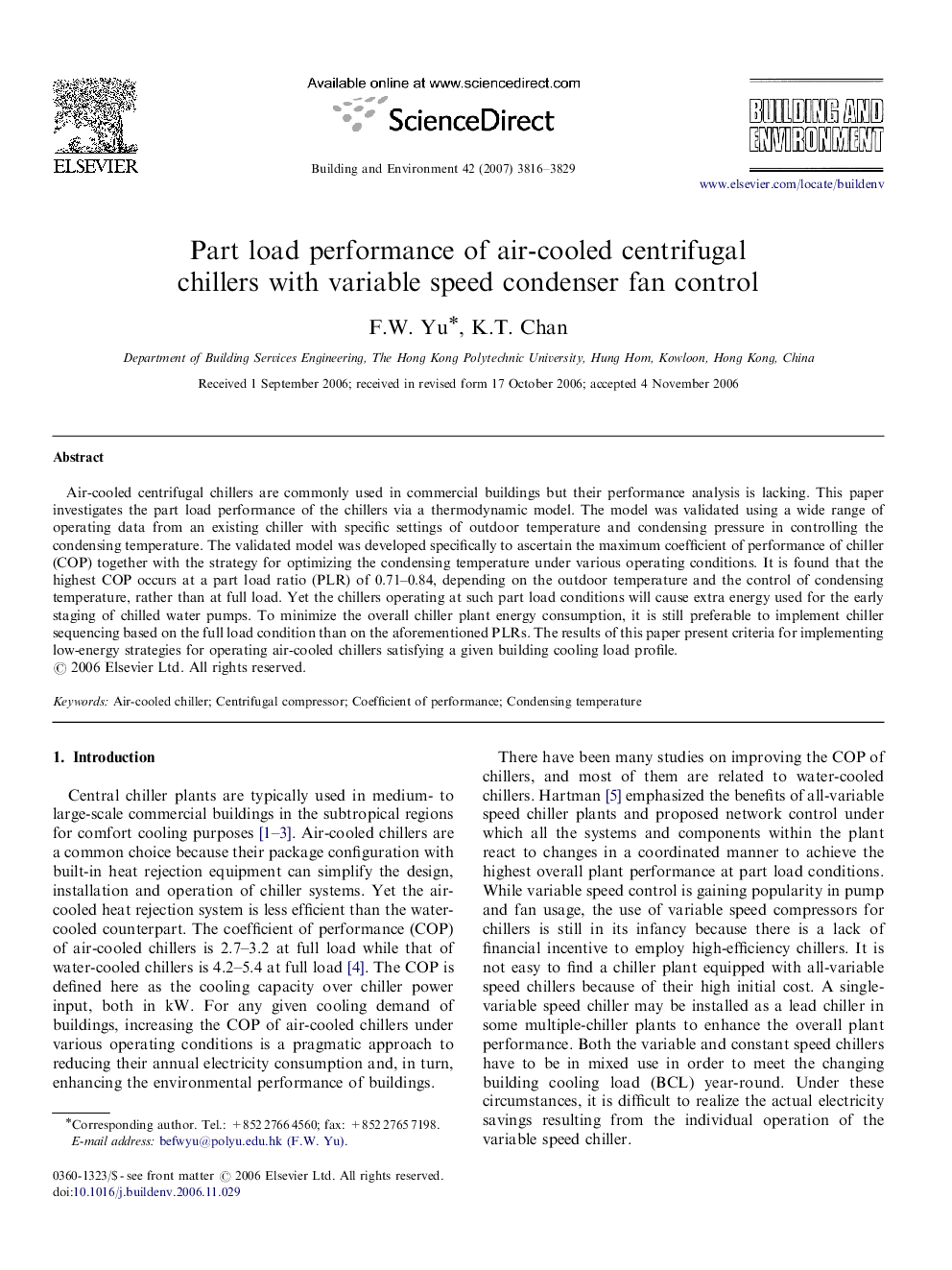| Article ID | Journal | Published Year | Pages | File Type |
|---|---|---|---|---|
| 250011 | Building and Environment | 2007 | 14 Pages |
Air-cooled centrifugal chillers are commonly used in commercial buildings but their performance analysis is lacking. This paper investigates the part load performance of the chillers via a thermodynamic model. The model was validated using a wide range of operating data from an existing chiller with specific settings of outdoor temperature and condensing pressure in controlling the condensing temperature. The validated model was developed specifically to ascertain the maximum coefficient of performance of chiller (COP) together with the strategy for optimizing the condensing temperature under various operating conditions. It is found that the highest COP occurs at a part load ratio (PLR) of 0.71–0.84, depending on the outdoor temperature and the control of condensing temperature, rather than at full load. Yet the chillers operating at such part load conditions will cause extra energy used for the early staging of chilled water pumps. To minimize the overall chiller plant energy consumption, it is still preferable to implement chiller sequencing based on the full load condition than on the aforementioned PLRs. The results of this paper present criteria for implementing low-energy strategies for operating air-cooled chillers satisfying a given building cooling load profile.
